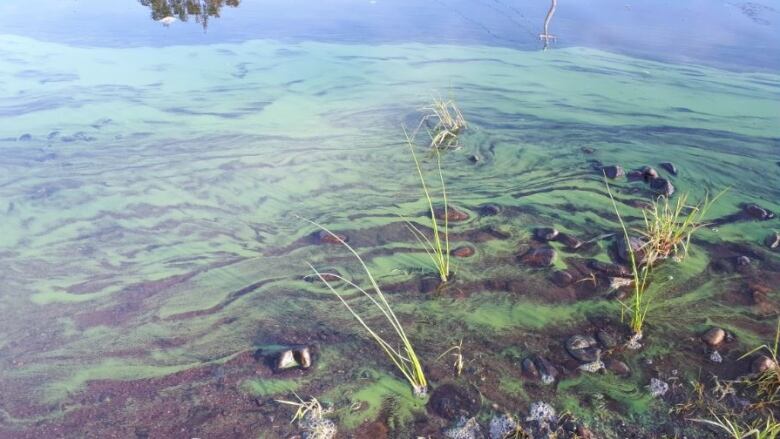Health unit warns of apparent blue-green algae bloom on Lake St. Clair
The health unit is awaiting the results of testing

The Windsor-Essex County Health Unit (WECHU) is warning people about an apparent blue-green algae bloom on Lake St. Clair in the area near Stoney Point.
The health unit is awaiting test results to confirm the bloom, it said in a news release issued Tuesday afternoon.
Meanwhile, it is cautioning residents that use wells or cisterns that draw water directly from Lake St. Clair not to drink the water unless they are routinely testing for microcystins using a licensed lab, and results show levels less than 1.5 parts per billion.
Water that tests within that range is suitable for adults, children aged six and older, pets, and livestock animals, the health unit said in the news release.
Children under six should only drink bottled or municipal water.
Water looks cloudy or like green paint or pea soup
People should also stick to using bottled or municipal drinking water, after it has been boiled,for infant feeding preparation.
The health unit cautioned people visiting beaches on the lake against swimming in water if it looks cloudy or like green paint or pea soup.
Pets could suffer serious health consequences, including death, as a result of drinking lake water during a bloom.
The most common toxins produced during a blue-green algae bloom are called microcystins, the health unit said.
Children under seven are at the greatest risk from the toxins.
Health risks from microcystins
Swimming, bathing or showering in contaminated water can cause itchy irritated eyes and skin.
Ingesting the toxins in small quantities can cause headaches, fever, diarrhea, abdominal pain, nausea and vomiting.
Ingesting them in lager quantities can result in more serious health consequences, including liver damage.
More information on blue-green algae blooms can be found on the health unit's website.












_(720p).jpg)


 OFFICIAL HD MUSIC VIDEO.jpg)
.jpg)



























































































